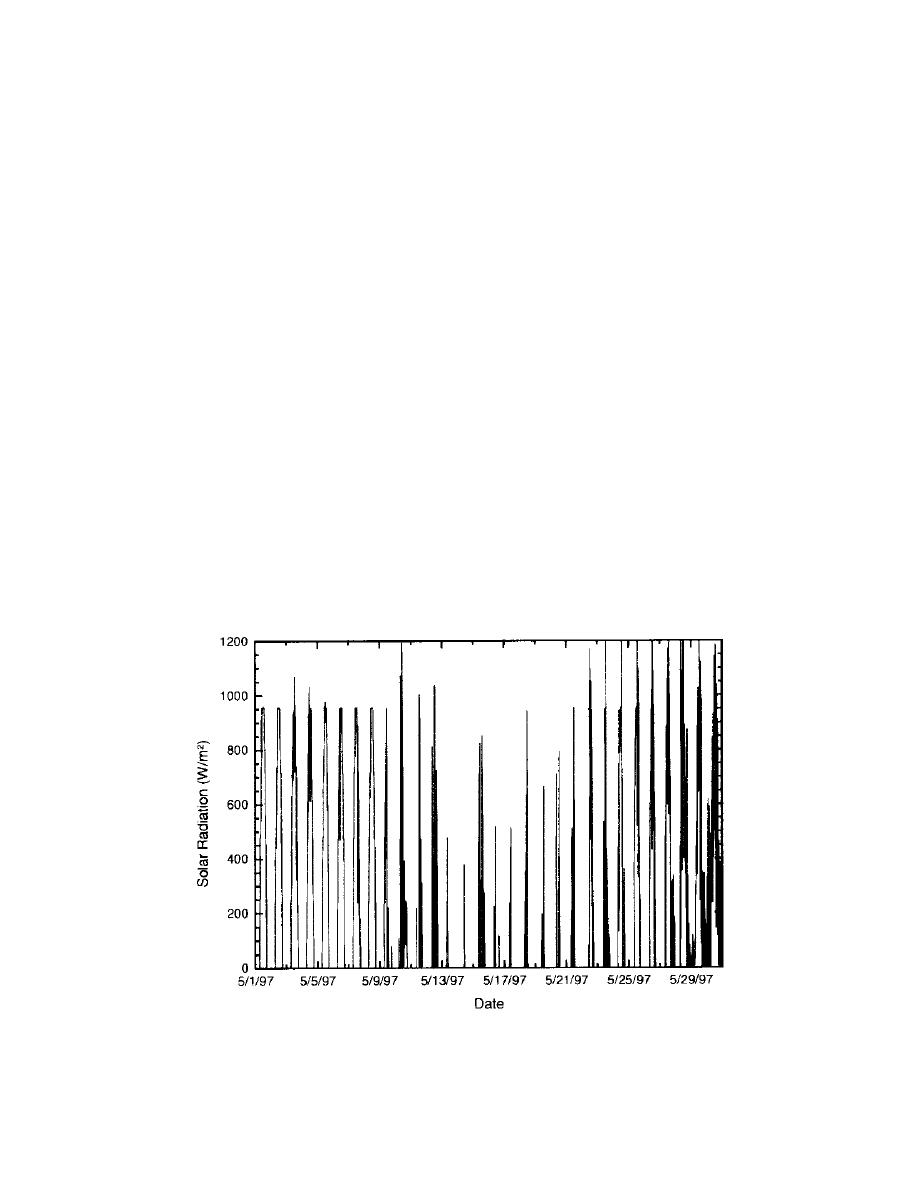
UFC 3-440-01
14 June 2002
clearly shows that the solar system is capable of supplying the hot water demands for
fully occupied barracks.
f. Monitoring Totals. To date, the solar hot water system has operated as
expected. During the three-month monitoring period the system delivered 3.78 MBTU's
(4,000 MJ) and 92,313 gals (349,443 L) of hot water at an average temperature of 130
degrees F (54 degree C) to Building 80306.
G-8. Economic Evaluation to Date. The hot water system delivered a maximum of
25.5 MBTU's (26,800 MJ) of hot water for a one-month period (refer to March 1998
from Figure G-25). Assuming the efficiency of the DHW gas heaters is 50% (for the
kind of hot water heater used this is a good estimate), the total displaced gas would be
1.5 times 25.5 MBTU's (26,800 MJ), or 38.3 MBTU (40,400 MJ) for a savings of
1.19 in displaced gas. If this were accomplished every month, the system payback
time would be 8.7 years. Note however that the estimate assumes there are no
maintenance costs during this period. Any maintenance will increase the payback time.
Also note that the solar hot water system was designed to supply hot water for a fully
occupied building year-round. As seen in Figures G-24, G-25, G-26, and G-27, Building
80306 was not fully occupied during the months of June and July and therefore the
potential peak MBTU (kW-h) for those months was not realized. As a result of the
varying occupancy of the facility, the hot water usage varied which in turn extended the
originally calculated payback period.
Figure G-9. Solar Insolation Measured for May 1997
G-9


 Previous Page
Previous Page
